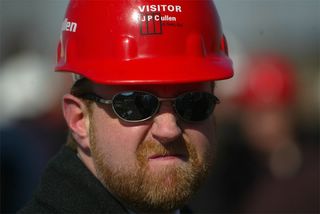Nihon Machi, one of my favorite places
 If you talk to ROUTE 1 editorial assistants KERSTIN and ANNIKA, the *REAL* reason for my SAN FRANCISCO visit was the procure Japanese stationery for them.
If you talk to ROUTE 1 editorial assistants KERSTIN and ANNIKA, the *REAL* reason for my SAN FRANCISCO visit was the procure Japanese stationery for them.That mission was accomplished this morning, thanks to a visit to the KINOKUNIYA store in NIHON MACHI, San Francisco's JAPANTOWN.
Nihon Machi is one of my favorite places on Earth.
After the 1906 earthquake destroyed San Francisco's Chinatown, many of the city's ISSEI (Japanese immigrants) moved to the Western Addition, one of San Francisco's newest neighborhoods.
By 1920, "Nihonjin-Machi" (town of Japanese people) had become a thriving residential district filled with Issei and their second-generation children, the NISSEI. The community even held an annual sumo tournament at Dreamland, later known as Winterland, at Steiner and Post streets.
World War II changed everything, of course, as Japanese Americans were interned at 10 concentration camps located in desolate areas of the United States.
Japantown and the nearby Fillmore district quickly filled up with war industry workers. The area earned the sobriquet "Harlem of the West," for its African American population and thriving jazz scene.
The last Japanese internment camp at Tule Lake, Calif., closed in 1946 and Japanese Americans returned to the Japantown area, but not to the pre-war population levels.
By 1960, about half of Japantown and much of the Western Addition had been razed for one of the first, federally funded "urban renewal" projects in the U.S. About 1,500 Japanese American residents were displaced, further distancing Nihon Machi from its past.
By the way, I am typing this post while listening to "ALL ABOUT MY GIRL," by soul-jazz organist JIMMY McGRIFF. He passed away this week age 72, and I will miss his wonderful, swinging sound.


0 Comments:
Post a Comment
<< Home